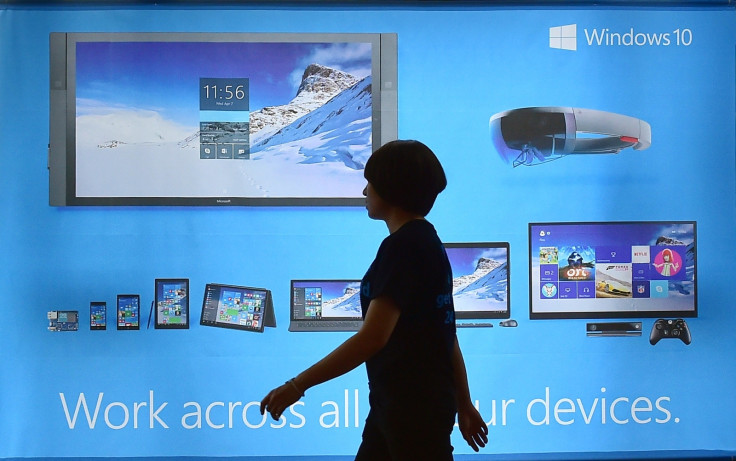How to fix Windows 10 internet connection issues
As a fix you might disable firewalls and antivirus software on your Windows 10 PC.

There could be ample reasons for having an unsteady internet connection on your PC running Windows 10. They include problems with the cable modem, or the service provider itself, firewalls, antivirus software or even the network adapter driver. As part of troubleshoot, you might check out the following fixes.
The first thing you should do is generate a wireless network report, which will find out the root cause of the problem.
- For this, go to the search box on the task bar then type Command prompt, press and hold Command prompt then select Run as administrator then Yes
- At the command prompt type netswlan show wlanreport
Doing the above steps will create an HTML file that you can open in the browser from the location listed under command prompt. Also ensure the connection problem is not related to your modem or internet service provider (ISP). If yes, then check with your internet provider.
In the search box on the taskbar type Command prompt, then press and hold Command prompt and select Run as administrator, finally select Yes.
- At the command prompt type ipconfig
- Look for the IP address listed next to Default gateway and write down the address
- At the Command prompt, type ping and press Enter. You should see the following results
Reply from 192.168.1.1: bytes=32 time=5ms TTL=64
Reply from 192.168.1.1: bytes=32 time=5ms TTL=64
Reply from 192.168.1.1: bytes=32 time=5ms TTL=64
Reply from 192.168.1.1: bytes=32 time=5ms TTL=64
If you see results as listed above, but still cannot connect to the internet, the problem must be with the modem or your internet provider.
Keep your network adapter driver updated
Sometimes internet problems could be due to incompatible network adapter driver. Perform the following steps to find out if an updated driver is available;
- In the search box type Device Manager and select it
- Select Network adapters
- Do a right-click on the network adapter, then select Update Driver Software>> Search automatically for updated driver software. Follow the on-screen instructions and then select Close
- Once the updated driver is installed, select Start>> Power>> Restart
If you cannot find a new driver, head over to your PC manufacturer's website and download the latest driver.
Downgrade to previous network adapter driver
Installing a previous version of the driver could also resolve the connection issue, in case the new driver fails to do so.
- In the search box type Device Manager then select it
- Select Network adapters >> network adapter name
- Press network adapter then select Properties
- Select Driver then Roll back driver, and follow the on-screen prompts to complete the process
- Restart your PC once the the driver is installed
Use network troubleshooter
Consider using network troubleshooter to fix common internet connection issues. To run it,
- Type Network troubleshooter in the search box on taskbar, then select Indentify and repair network problems
- Perform the steps in the troubleshooter to see if that fixes the issue
If it does not resolve the problem, then reset TCP/IP stack, release the IP address, renew the IP address, and finally flush and reset the DNS client resolver cache. You need to run these commands in a command prompt window. Just run the command prompt as admin then execute the command in an orderly manner.
- Type netshwinsock reset then press Enter
- Type netsh int ip reset then press Enter
- Type ipconfig /release then press Enter
- Type ipconfig /renew then press Enter
- Type ipconfig /flushdns then press Enter
Disable firewalls
Firewalls might sometimes prevent you from establishing a connection. Try turning them off and see if that helps
- Open a Command prompt and then run it as admin
- Type advfirewall set allprofiles state off in the command prompt and press Enter
Now open a browser to see if you can connect to the internet. To turn the firewall software on, at the command prompt type netsh advfirewall set allprofiles state on and then press Enter.
Disable antivirus
- In the search box type System and security then select Review you computer's status and resolve issues
- Select the arrow next to Security
- Check the documentation for the antivirus and turn it off
Uninstall network adapter driver
As part of the fix, try to uninstall the network adapter driver. But do not forget to create a backup for that before uninstalling it.
- Type Device Manager in the search bar and then select it
- You will see the name of the network adapter
- Right-click on the network adapter, select Uninstall>> Delete the driver software for this device then click Ok to confirm the process. At the end restart the PC if it asks to.
Use network reset
As the last and final step consider using network reset to reinstall network devices. But note that your PC must be running Windows 10 version 1607 to use network reset.
- Select Start>> Settings>> Network & Internet>> Status>> Network reset
- Select Reset now then Yes to confirm the process. Wait for a while until the PC restarts.
© Copyright IBTimes 2025. All rights reserved.





















